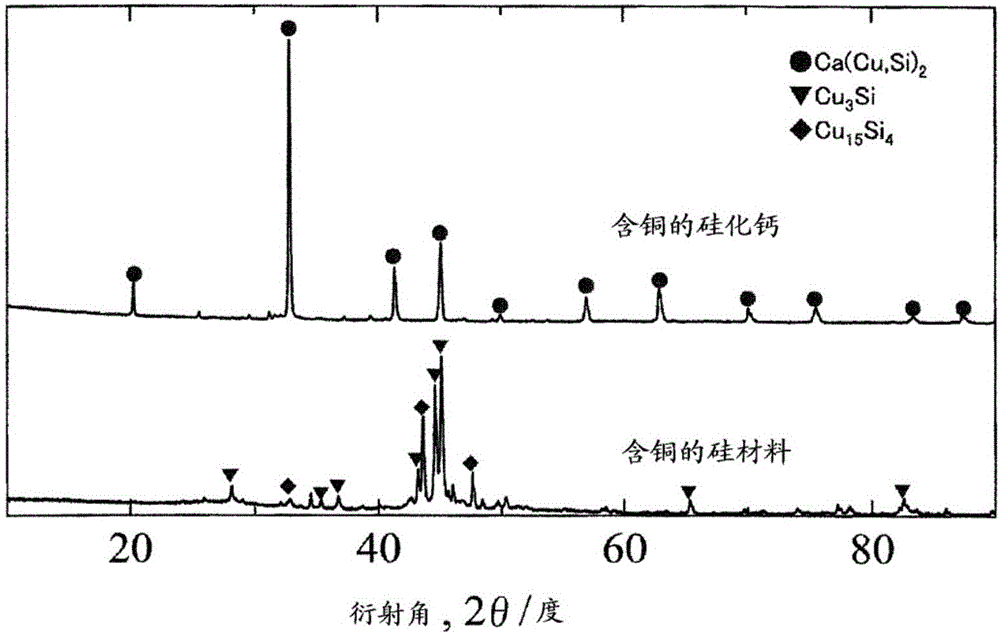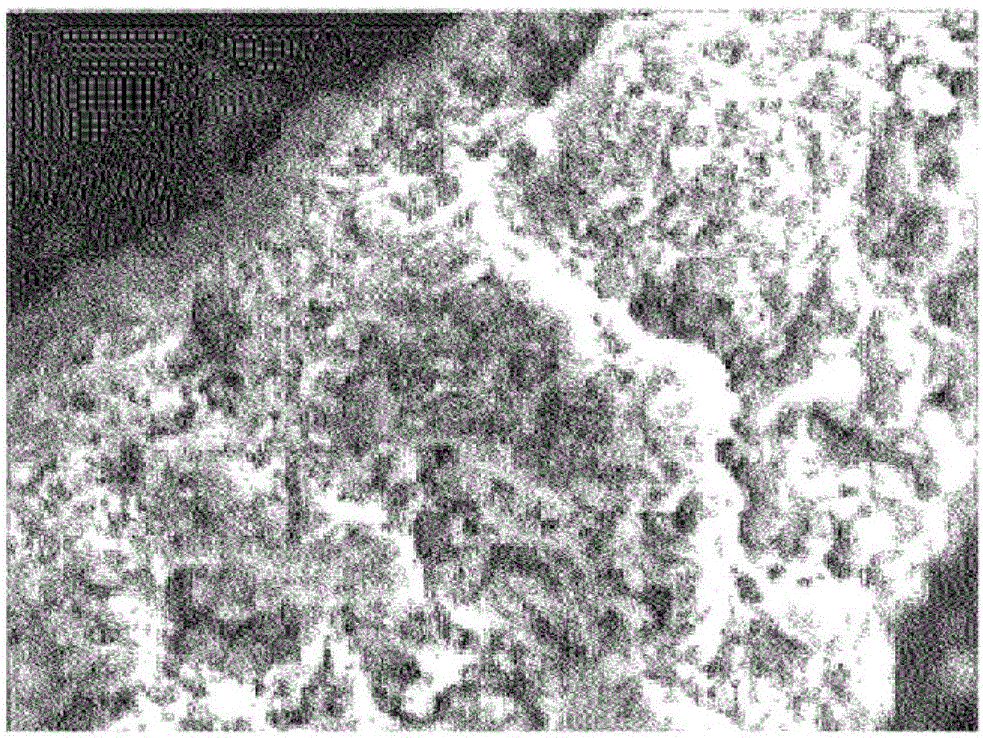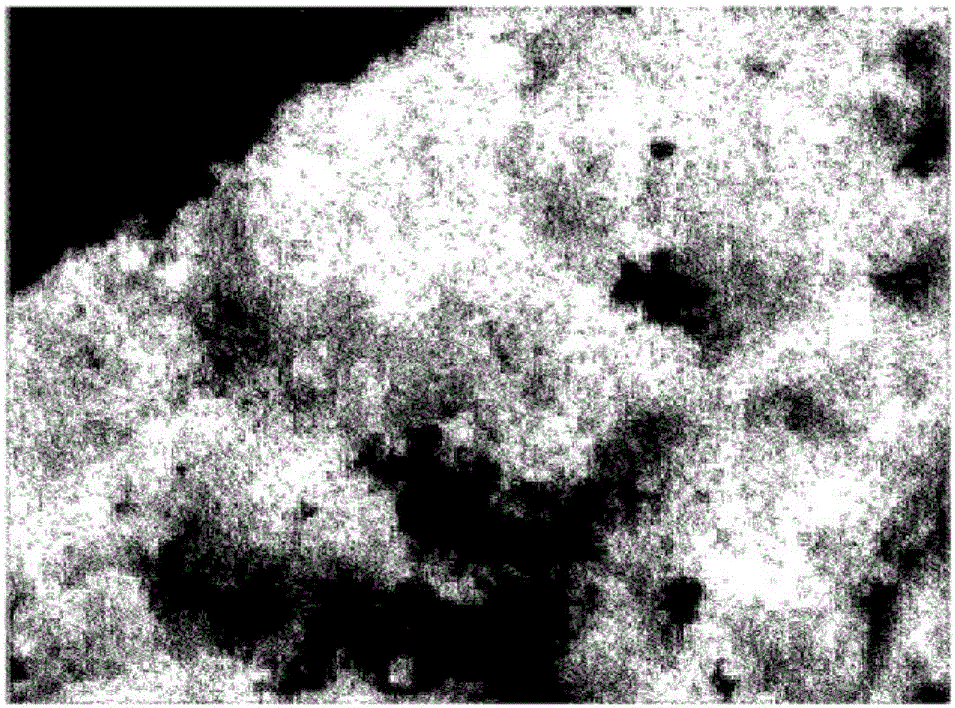Copper-containing silicon material, method for manufacturing same, negative-electrode active substance, and secondary cell
A manufacturing method and technology of silicon materials, applied in the direction of secondary batteries, non-aqueous electrolyte batteries, lithium batteries, etc., can solve the problems of reduced cycle characteristics, easy condensation, high energy, etc., and achieve the effect of improving electronic conductivity
- Summary
- Abstract
- Description
- Claims
- Application Information
AI Technical Summary
Problems solved by technology
Method used
Image
Examples
Embodiment 1
[0079]
[0080] Calcium metal, copper metal and silicon metal were weighed into a carbon crucible at an atomic ratio of Ca:Cu:Si=1.05:0.25:1.65, and heated to about 1300°C with a high-frequency induction heating device to melt it. The molten metal was poured into a predetermined mold for casting, and the obtained ingot was pulverized and classified with a sieve to a particle size passing through a sieve opening of 53 μm. The powder is CaCu x Si y Copper-containing calcium silicide represented by (x=0.25, y=1.65, x+y=1.9).
[0081] The XRD pattern of the copper-containing calcium silicide obtained is shown in figure 1 . As the X-ray source, Cu-Kα rays are used. Using the X-ray diffraction pattern (diffraction angle 2θ = range of 10 to 90°) obtained by the measurement, the analysis was performed with analysis software (software name: PDXL). figure 1 All the diffraction peaks shown in can be indexed to the structure of space group P6 / mmm of International Table Notation 191...
PUM
| Property | Measurement | Unit |
|---|---|---|
| Thickness | aaaaa | aaaaa |
| Thickness | aaaaa | aaaaa |
Abstract
Description
Claims
Application Information
 Login to View More
Login to View More - R&D
- Intellectual Property
- Life Sciences
- Materials
- Tech Scout
- Unparalleled Data Quality
- Higher Quality Content
- 60% Fewer Hallucinations
Browse by: Latest US Patents, China's latest patents, Technical Efficacy Thesaurus, Application Domain, Technology Topic, Popular Technical Reports.
© 2025 PatSnap. All rights reserved.Legal|Privacy policy|Modern Slavery Act Transparency Statement|Sitemap|About US| Contact US: help@patsnap.com



